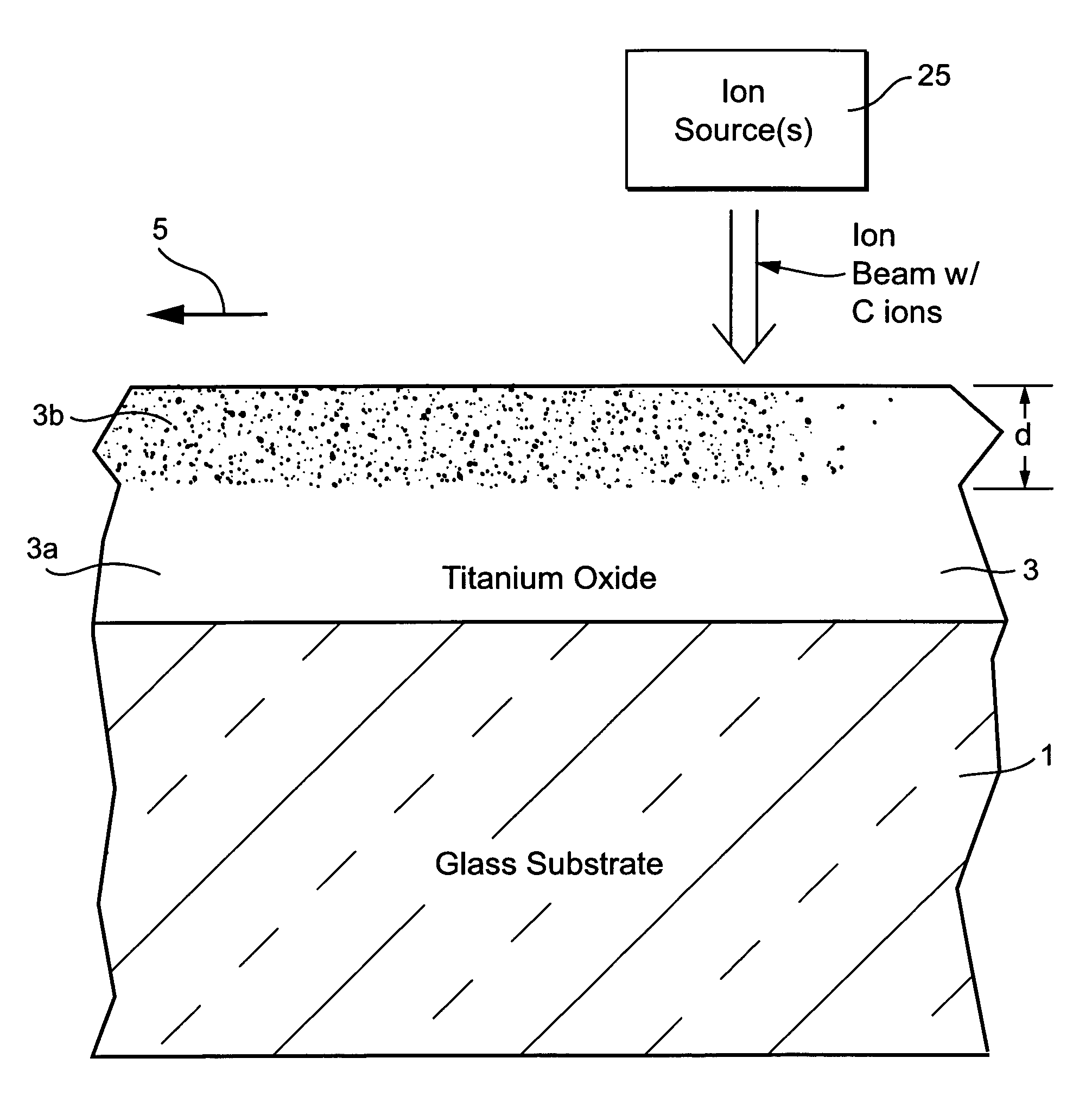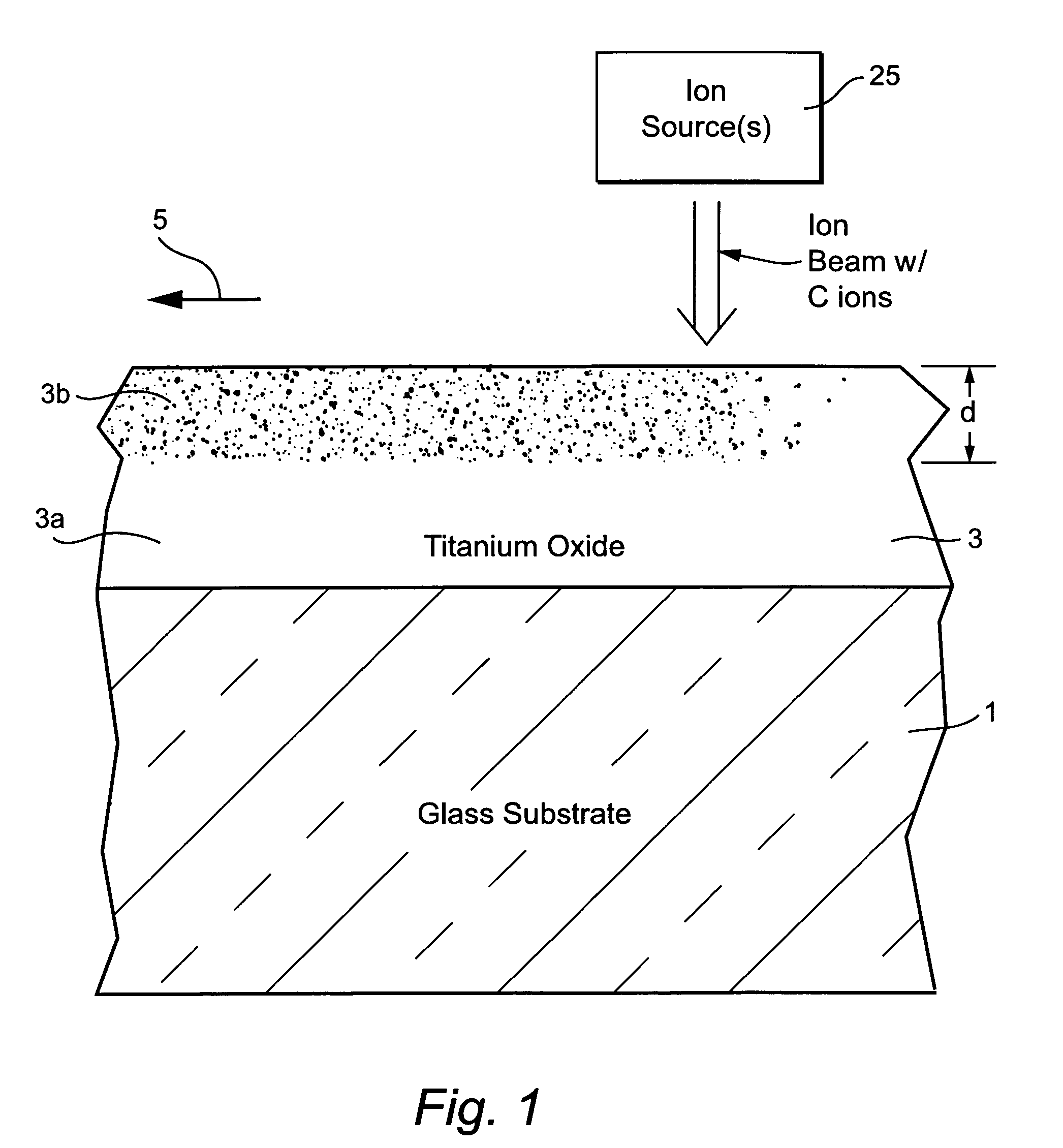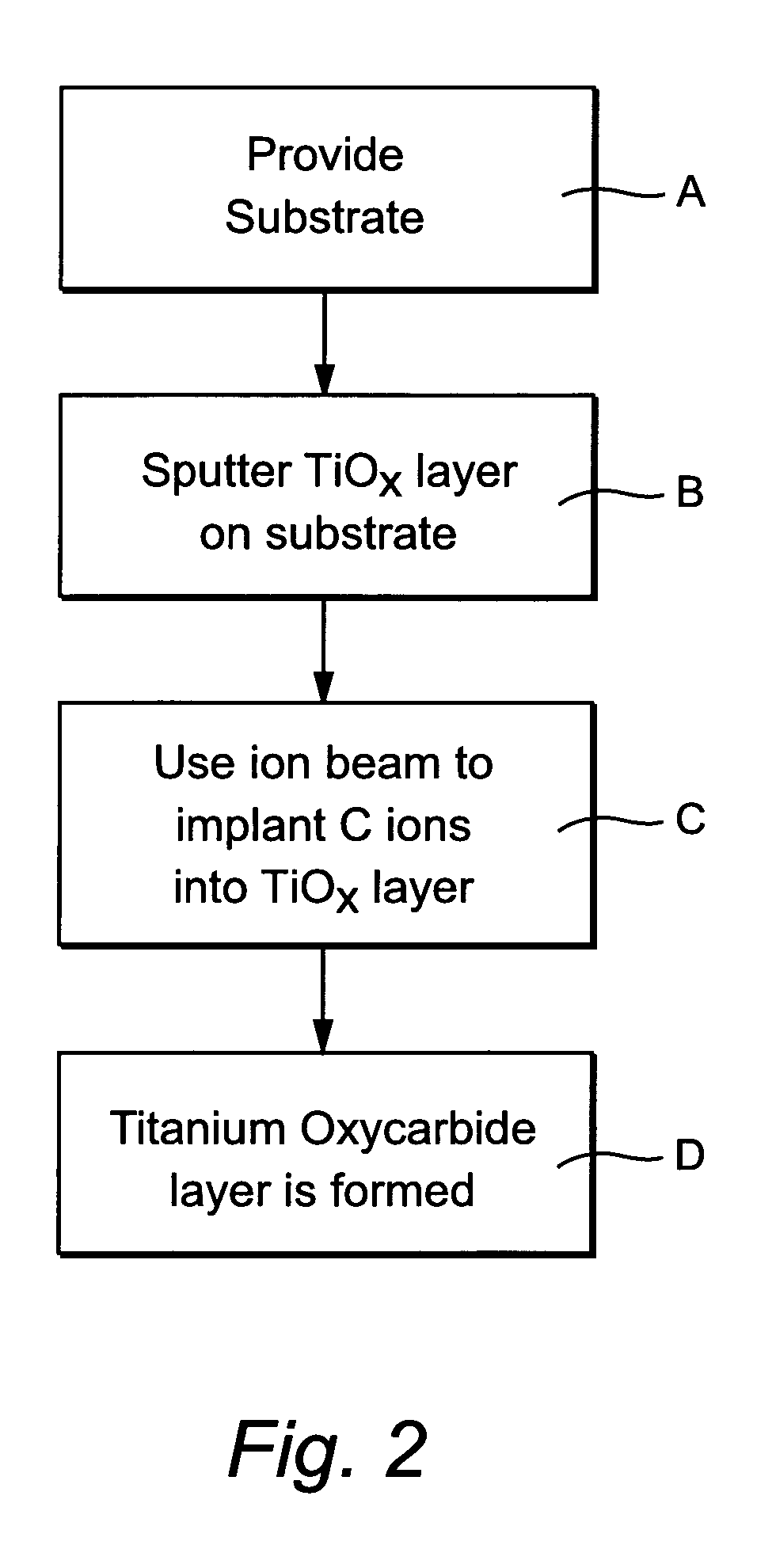Coated article including titanium oxycarbide and method of making same
a technology of titanium oxide and coated articles, which is applied in the field of coating articles including titanium oxycarbide and the same, can solve the problems of high damage poor scratch resistance poor durability of titanium oxide coated articles, etc., to achieve improved scratch resistance, improve certain contact angle characteristics, and reduce contact angle
- Summary
- Abstract
- Description
- Claims
- Application Information
AI Technical Summary
Benefits of technology
Problems solved by technology
Method used
Image
Examples
examples
[0040]For purposes of example only, several examples were made and analyzed in accordance with different embodiments of this invention. In each of the below-listed examples, an amorphous TiO2 layer 3 approximately 220–230 Å thick was magnetron sputtered onto a 3 mm thick glass substrate 1. Then, each sample was passed beneath an ion source 25 at a rate of 100 inches per minute, where the source 25 used acetylene gas to expel at least C ions toward the layer 3. The beam was incident on the layer 3 at an angle of about 90 degrees. In Example 1, the layers were deposited on the tin side of the float glass substrate 1, whereas in Examples 2–4 the layers were deposited on the air side (non-tin side) of the substrate 1. Processing for the implantation for each example is set forth below. Gas flows below are total gas flows of acetylene in units of sccm in the source, and voltage is the anode / cathode voltage in source 25.
[0041]
TABLE 1IMPLANTATION PROCESSING FOR EXAMPLESGas & FlowVoltageCur...
PUM
| Property | Measurement | Unit |
|---|---|---|
| Electric potential / voltage | aaaaa | aaaaa |
| Electric potential / voltage | aaaaa | aaaaa |
| Electric potential / voltage | aaaaa | aaaaa |
Abstract
Description
Claims
Application Information
 Login to View More
Login to View More - R&D
- Intellectual Property
- Life Sciences
- Materials
- Tech Scout
- Unparalleled Data Quality
- Higher Quality Content
- 60% Fewer Hallucinations
Browse by: Latest US Patents, China's latest patents, Technical Efficacy Thesaurus, Application Domain, Technology Topic, Popular Technical Reports.
© 2025 PatSnap. All rights reserved.Legal|Privacy policy|Modern Slavery Act Transparency Statement|Sitemap|About US| Contact US: help@patsnap.com



